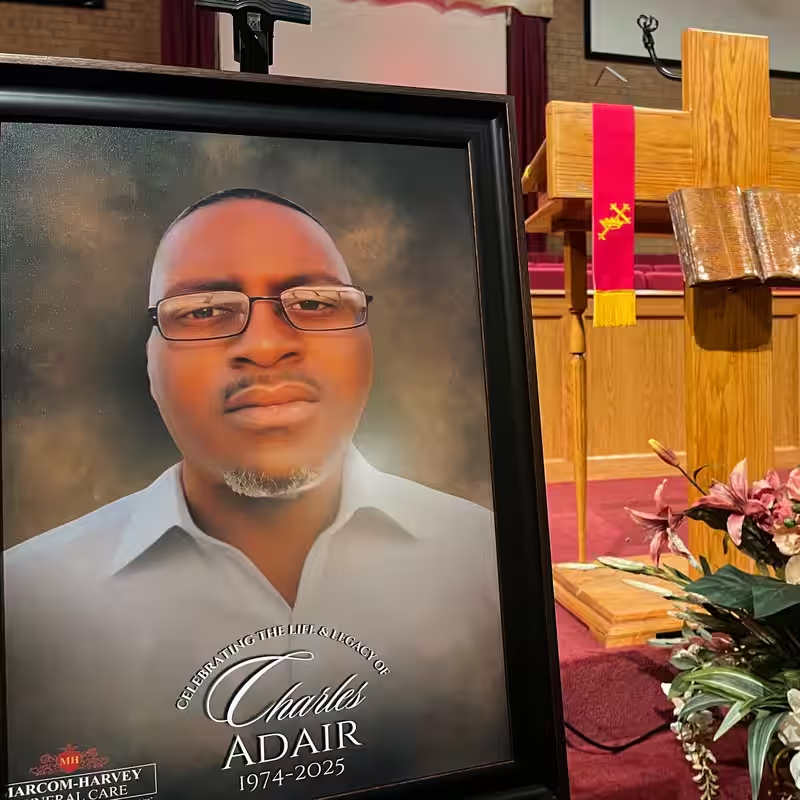Kansas Deputy Charged With Murder After Kneeling on Handcuffed Inmate’s Back for 86 Seconds
A chilling affidavit released last week has reignited national scrutiny over law enforcement use of force—this time in a Kansas jail where a sheriff’s deputy is now charged with murder for kneeling on the back of a handcuffed, medically vulnerable inmate until he stopped moving.
What Happened to Charles Adair?
On the evening of July 5, 2025, Charles Adair, a 52-year-old man with multiple serious health conditions—including untreated diabetes, a pacemaker, and schizophrenia—was pronounced dead inside the Wyandotte County Jail in Kansas City, Kansas.
According to a newly unsealed affidavit, Adair had been arrested the day before on misdemeanor warrants related to unpaid traffic tickets. After being treated for an infected leg wound at a medical center, he was cleared for jail intake and placed in a wheelchair due to mobility issues.
That night, while being wheeled back to his cell after a dressing change, Adair reportedly got into a brief altercation with staff and threw himself from his wheelchair. Deputies quickly handcuffed him, returned him to the chair, and placed him face-down on the bottom bunk of his cell.
The Fatal 86 Seconds
At 8:36 p.m., Deputy Richard Fatherley entered the cell and placed his left knee on Adair’s lower back. For 1 minute and 26 seconds, Fatherley maintained pressure while other officers held Adair’s limbs. Court documents say Adair pleaded, “OK,” and then stopped moving.
Rather than easing off, the affidavit states Fatherley “appeared to shift forward and apply more weight” even as deputies removed Adair’s handcuffs. He finally lifted his knee at 8:37 p.m. Adair never regained consciousness and was declared dead at 9:19 p.m.
Autopsy Confirms Homicide
The medical examiner ruled the cause of death as “complications of mechanical asphyxia”—a form of suffocation caused by external pressure restricting breathing. The manner of death was officially listed as homicide.
Contributing factors included hypertensive cardiovascular disease and liver cirrhosis from chronic alcoholism, but the autopsy made clear: the restraint was the triggering event.
Legal Fallout and Public Outcry
In September 2025, Fatherley was charged with second-degree murder or, alternatively, involuntary manslaughter. Notably, he has not been arrested and remains free pending a November court appearance.
Civil rights attorney Ben Crump, representing Adair’s family, called the incident “a textbook case of excessive force against a defenseless man.” The family is demanding the release of jail surveillance footage, which has not yet been made public.
Fatherley’s attorney, James Spies, insists the death was “tragic but accidental,” citing Adair’s preexisting conditions. But critics argue that restraining a prone, handcuffed individual—especially one with known health vulnerabilities—is a known risk that officers are trained to avoid.
Restraint-Related Inmate Deaths: A Disturbing Pattern
Adair’s case echoes other high-profile deaths involving prone restraint, including Elijah McClain (2019) and George Floyd (2020). According to data from the Bureau of Justice Statistics:
| Year | Reported Jail Deaths from Restraint/Asphyxia | % Involving Preexisting Medical Conditions |
|---|---|---|
| 2020 | 42 | 68% |
| 2021 | 39 | 71% |
| 2022 | 45 | 74% |
| 2023 | 41 | 70% |
These figures underscore a systemic issue: individuals with disabilities or chronic illness are disproportionately at risk during physical restraints.




